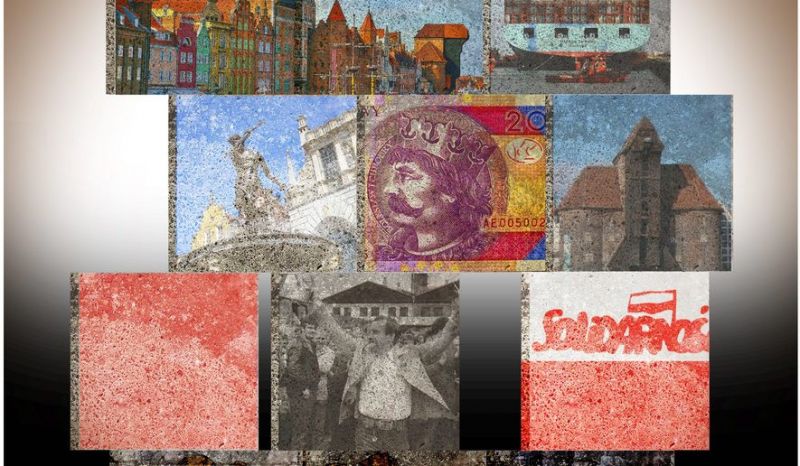
Over the past 1,000 years, this city on the Baltic has gone through cycles of great prosperity and almost total destruction. This is the city where World War II began 76 years ago on Sept. 1, 1939. And this is the city where the fall of European communism began in 1980. This past week, several leaders of Eastern and Central European nations came to Gdansk to commemorate the 70th anniversary of the end of World War II at the Monument to the Fallen Shipyard Workers of 1970, who were shot by the communists for merely peacefully protesting their conditions.
Gdansk has been at times a German city known as Danzig and at other times a Polish city. During the Middle Ages, it was at times a free German city and part of the Hanseatic League. It then became a Polish city until Poland was divided up between Russians, the Austria-Hungarians and the Germans in the late 1700s, whereupon it became the German city of Danzig again. After the first World War in 1918, Danzig became a free, independent, predominately German city. At the end of World War II, Gdansk was given back to Poland as the border was shifted westward, and the remaining German residents where shipped back to Germany. Gdansk was then repopulated with Poles, many of whom had lost their homes and property as part of what had been Poland was given to Belarus and Ukraine.
Much of Danzig-Gdansk was destroyed during World War II. The old part of the city has been rebuilt with many 17th century-style buildings that fit in perfectly with the ones that had not been destroyed or severely damaged, thus making it a delightful area filled with fine restaurants and other attractions for both the tourists and the locals.
In this last chapter in the renewal of Gdansk, all of Poland and Eastern Europe began with the movement for an independent (non-communist) union at the Gdansk shipyard in 1980, under the leadership of a 36-year old electrician by the name of Lech Walesa. The shipyard strike and protest spread to other factories and institutions throughout Poland under the name of Solidarity. Almost 10 million people joined the movement, but then in December 1981, the communist prime minister introduced martial law, outlawed Solidarity and undertook mass arrests of its leaders and other protesters. Solidarity went underground, and the Polish economy continued to shrink. By 1988, the government was forced to re-legalize Solidarity. Free Parliamentary elections were held in June 1989, which the communists lost. The largely nonviolent revolution in Poland quickly led to the fall of the Berlin Wall and other communist dictatorships in Eastern and Central Europe.
Renewal began almost immediately when a young Polish economist by the name of Leszek Balcerowicz undertook radical economic reform (which became known as shock therapy). Mr. Balcerowicz became deputy prime minister and minister of finance in the new non-communist government and, subsequently, head of the Polish central bank. He was largely responsible for the stellar economic performance of Poland over the last 25 years. Poland was the only member of the EU not to have gone into recession during the global downturn in 2009, and it continues to grow at about 3.5 percent per year — far higher than most of the others in the EU. Because of his contributions in renewing and revitalizing Poland, in 2014 Leszek Balcerowicz was awarded the Milton Friedman Prize for Advancing Liberty, granted by the Cato Institute.
As one who directly observed conditions in some of the Central and Eastern European countries before the end of communism, and was involved in the transition phase, I believe that the renewal of these countries has been much greater than the official numbers show — even though the official numbers are impressive. The data of the levels of income and size of the communist economies came largely from the communist governments with only limited revisions by the international organizations like the International Monetary Fund, World Bank, and national intelligence agencies such as the CIA. All of these groups had some vested interest in overstating the level of economic success of the communist regimes — because the overstatement of the “enemy” tended to result in more funding by the Western democracies to these organizations.
The communists had created a fictional economy whereby the levels and quality of output was much higher than the reality, and these fictions were often accepted by both the communist bureaucrats and those on the outside. When the collapse of communism occurred and honest accounting was introduced, the apparent drop in economic activity at the beginning of the transition period appeared to be much greater than the reality. This means that real improvement in the standard of living in Poland and the other former communist countries has been much greater than generally assumed.
The story of Gdansk is one of optimism. It shows that no matter how bad things get, we human beings are capable of not only renewal, but then some — in a relatively short period of time.
Richard W. Rahn is a senior fellow at the Cato Institute and chairman of the Institute for Global Economic Growth.
